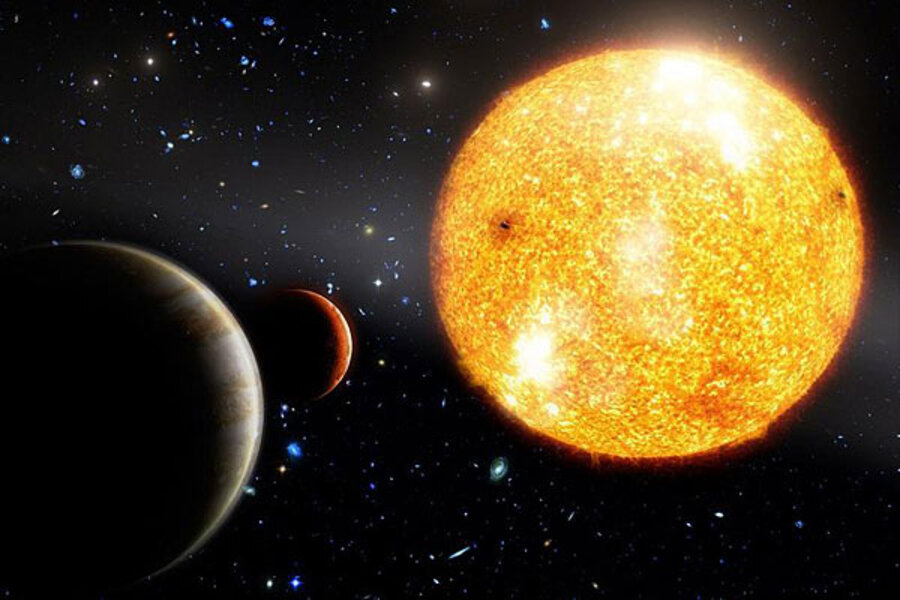Planets found at dawn of universe, but their existence is a mystery
Two planets from a period near the dawn of the cosmos are hinting that there may be more than one way to sow the seeds of planet formation.
A team of astronomers reports it has found two planets orbiting a star some 376 light-years from Earth in the constellation Cetus. The team estimates that the star is 12.8 billion years old, indicating that the star and its planets formed only a billion years after the universe itself emerged in what astrophysicists have dubbed the big bang.
By contrast, the solar system humans inhabit formed about 4.6 billion years ago.
The results, set for publication in an upcoming issue of the monthly journal Astronomy and Astrophysics, represent what the study's lead scientist, Johny Setiawan, dubs “an archaeological find in our own backyard.”
Indeed, the discovery is “remarkable since the planetary system most likely belongs to the first generation of planetary systems in the Milky Way,” the team writes.
The star, HIP 11952, has 83 percent of the sun's mass and 1.6 times the sun's radius. It appears to be on the doorstep of its death throes as a red giant, when its core's supply of hydrogen fuel hits “empty.” The core collapses, heats, and provides the energy for hydrogen remaining in the star's outer shell to begin fusing into helium. The star brightens, and its atmosphere heats and expands far beyond its current reach.
Orbiting in the path of that expansion are two planets: one with 2.9 times Jupiter's mass orbiting HIP 11952 once every 290 days; the other with 78 percent of Jupiter's mass orbiting the star once every 6.95 days.
Therein lies an intrigue: How did such planets form?
For years, astronomers have held that the stars most likely to host planets are, like the sun, enriched with elements heavier than the hydrogen they burn for fuel – elements such as carbon, nitrogen, oxygen, calcium, and silicon, for example. These are the raw materials for rocky cores around which planets form.
But these elements weren't around in the big bang's aftermath. They are forged in the fusion furnaces inside stars, which hurl them into interstellar space through explosions known as supernovae, as well as through less-violent processes. In other words, it took many generations of stars to build the universe's current inventory of these heavier elements, which astronomers dump into one bin labeled “metals.”
HIP 11952, having formed relatively soon after the big bang, is in scientific parlance, "metal poor." It has a far smaller inventory of these elements than one would expect for a star with planets.
The number of planets that have been found orbiting metal-poor stars is small. So far, astronomers have discovered more than 760 planets orbiting other stars. The two planets orbiting HIP 11952 bring to seven the number of planets found at metal-poor stars.
While HIP 11952 isn't the most metal-deficient star astronomers have observed, it is the poorest yet to host planets – opening a window on processes by which the universe's earliest planets formed, the team holds.
One explanation for that process suggests that planets in a metal-poor disk could begin to form in much that same way a star does: A passing star's gravity may perturb a second star's disk of dust and gas, generating regions of different densities. The densest portions could have enough gravity associated with them to begin a process of collapse and accretion of additional gas, forming a planet.
Another explanation holds that the embryos of giant planets may, under the right conditions, undergo a second, rapid collapse that brings them into a smaller size, comparable to the planets found around HIP 11952.
Dr. Setiawan's team says it hopes the discovery of more planets orbiting metal-poor stars will help researchers find the most likely mechanism for building the universe's earliest planets.
Setiawan is a researcher with the Max Planck Institute for Astronomy in Heidelberg, Germany.





